by Don Dingee on 08-28-2023 at 10:00 am
Categories: Prototyping, S2C EDA/SemiWiki.com/
The RISC-V movement has taken off so quickly because of the wide range of choices it offers designers. However, massive flexibility creates its own challenges. One is how to analyze, optimize, and verify an unproven RISC-V core design with potential microarchitecture changes allowed within the bounds of the specification. S2C, best known for its FPGA-based prototyping technology, gave an update at #60DAC into its emerging systematic RISC-V architecture analysis and optimization strategy, adding modeling and emulation capability.
Three phases to RISC-V architecture analysis
RISC-V differs from other processor architectures in how much customization is possible – from execution unit and pipeline configurations all the way to adding customized instructions. Developers are exploring the best fits of various RISC-V configurations in many applications, where some definitions are still ambiguous. EDA support has yet to catch up; basic tools exist, but few advanced modeling platforms are available.
These conditions leave teams in a problem: if they extend the RISC-V instruction set for their implementation, they must create new cycle-accurate models for those instructions before assessing performance, simulated or emulated. S2C is working to fill this void with a complete chain for systematic RISC-V architecture analysis and optimization featuring one familiar technology flanked by two others.
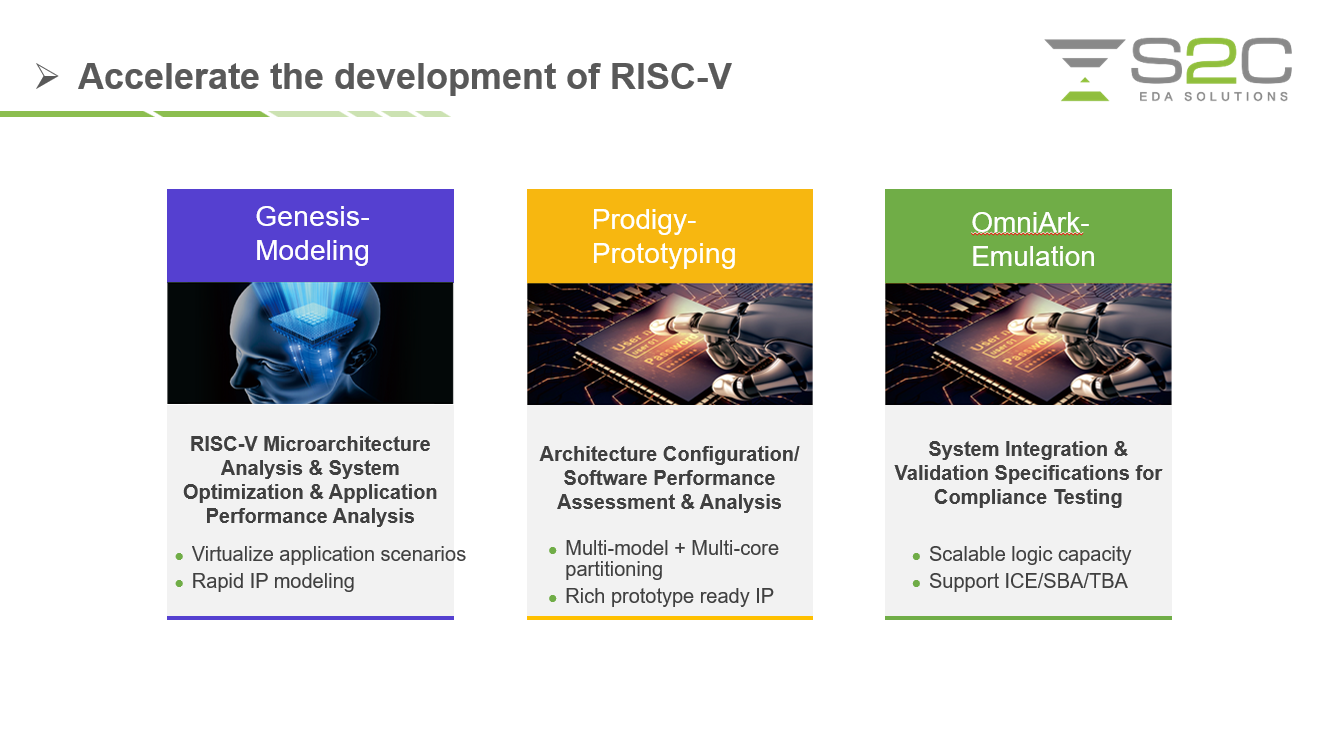
First in the chain is S2C's new RISC-V “core master” model abstraction platform, Genesis. It provides stochastic modeling, system architecture modeling, and cycle-accurate modeling, with increasing levels of accuracy as models add fidelity. Genesis allows the simulation of commercially available RISC-V cores as IP modules, then updating parameters or adding custom logic to the microarchitecture. These simulations enable earlier optimization of cores.
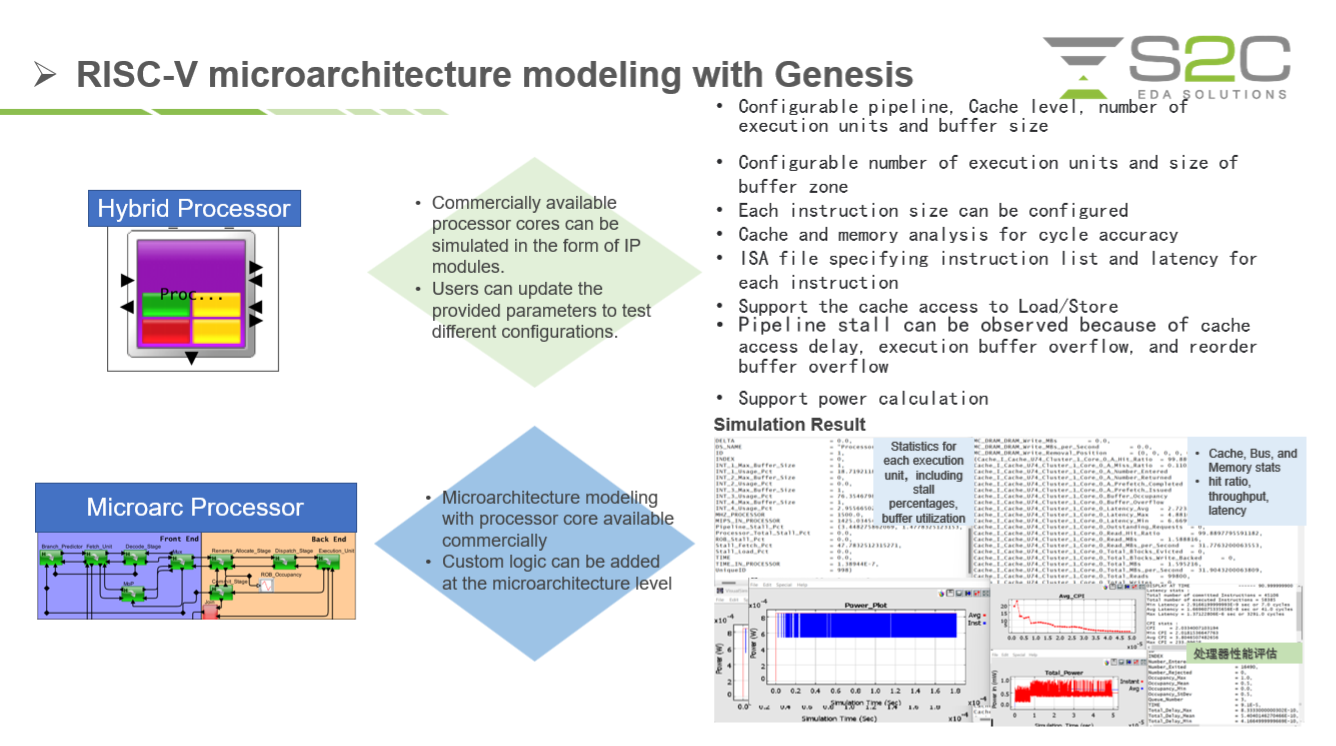
Holding the middle of the analysis chain is the S2C Prodigy prototyping family, facilitating FPGA-based prototypes for hardware logic debugging, basic performance assessment, and early software development. Prodigy prototyping hardware also accepts off-the-shelf I/O modules developed by S2C for stimulus and consumption of real-world signals around the periphery of the SoC, as well as RISC-V IP performance verification.
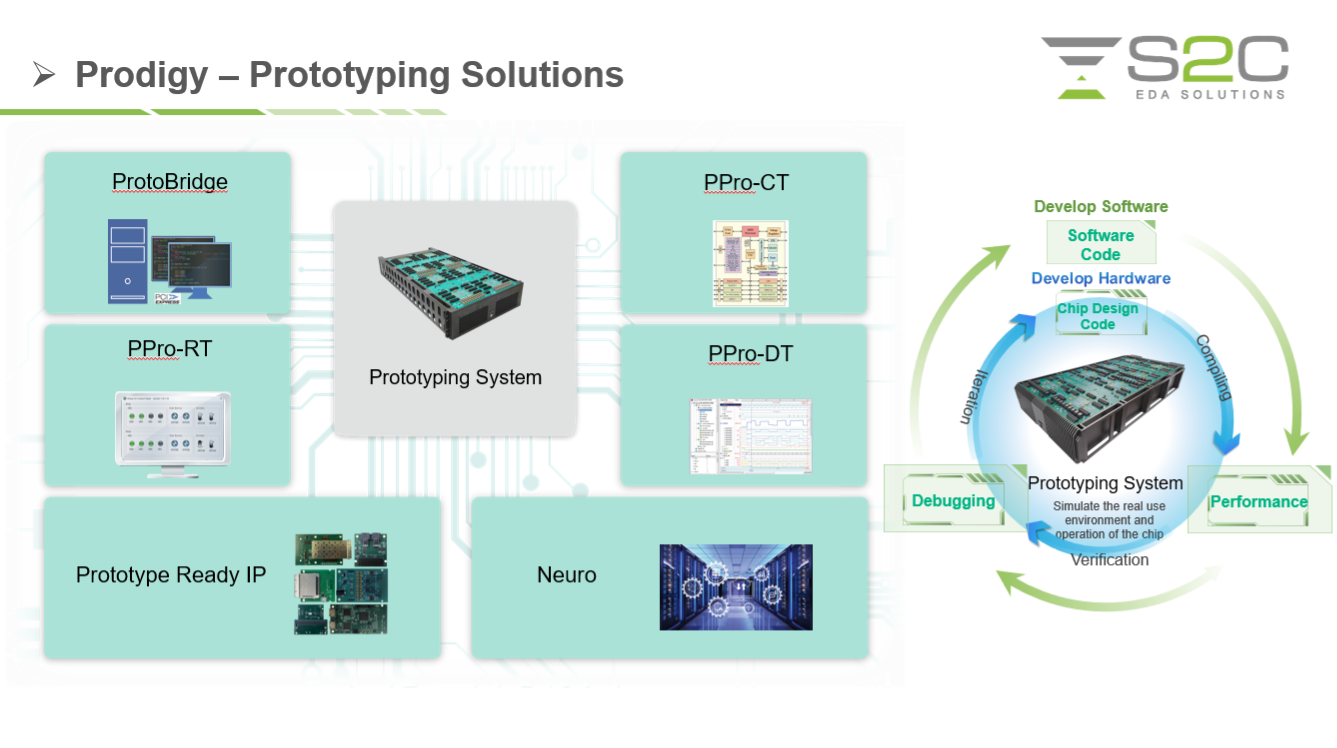
New emulation capability comes with S2C's OmniArk hybrid emulation system, capable of hyper-scale verification of RISC-V SoCs. OmniArk specializes in compiling automotive SoCs and boasts powerful debugging capabilities for an efficient verification environment. It scales up to 1 billion gates for large designs and supports verification modes like QEMU, TBA, and ICE.
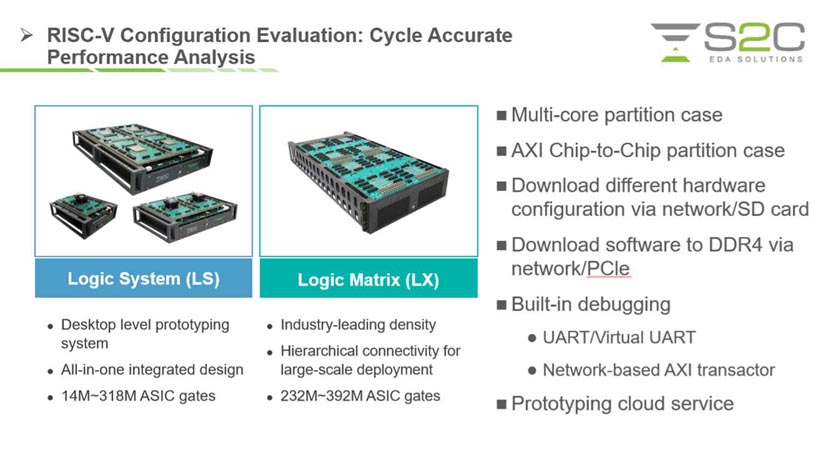
An example: collaboration on the XiangShan RISC-V core project
Accurate behavioral models of RISC-V cores carry through early modeling, FPGA-based prototyping, and hardware emulation processes. Giving designers better control of both IP and models enables tasks once only possible in hardware prototypes to shift into virtual analysis activities earlier in the design cycle, creating more opportunities for optimization.
An example of systematic RISC-V architecture analysis and optimization is in S2C's collaboration with the XiangShan project team based at the Chinese Academy of Sciences. XiangShan is a superscalar, six-wide, out-of-order RISC-V implementation targeting a Linux variant for its operating system.
The XiangShan team used S2C products to create a core verification platform integrated with an external GPU and other peripherals. The hyperscale core partitions into an S2C FPGA-based prototyping platform, with peripherals added via PCIe and other interfaces.
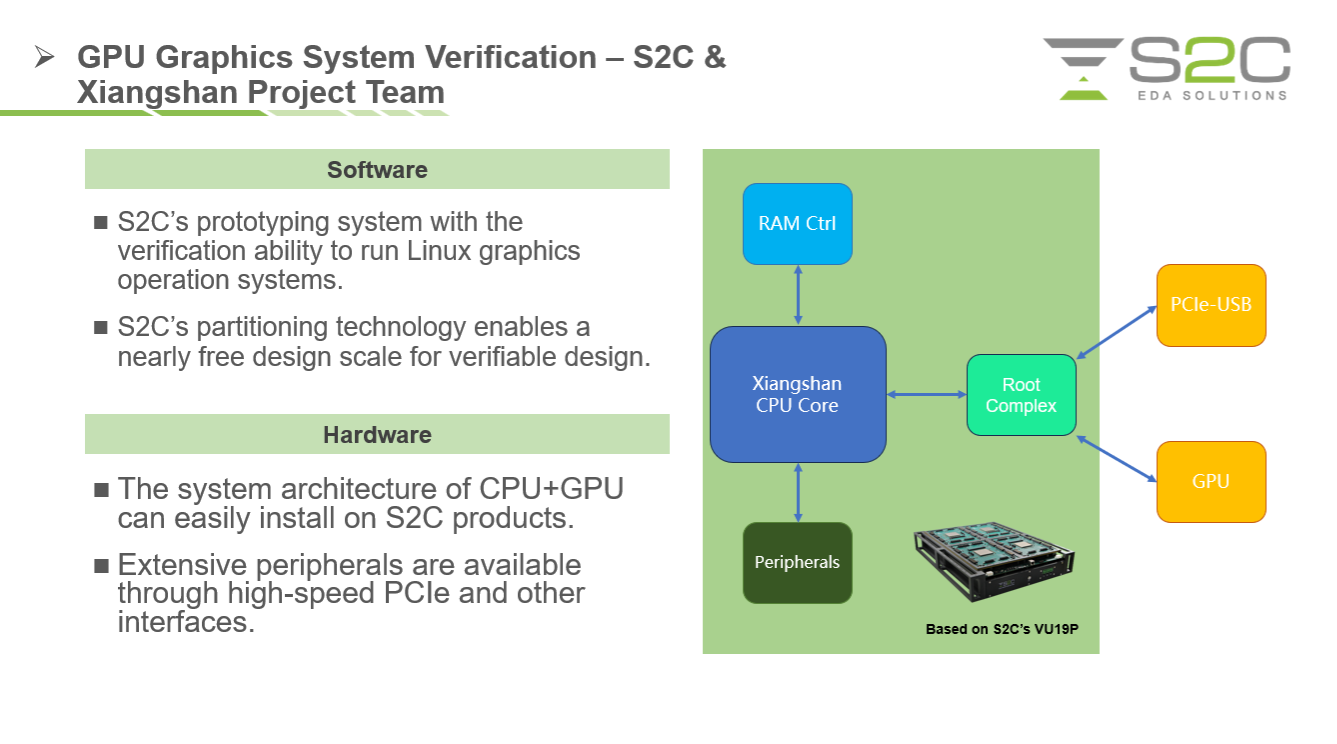
“As RISC-V technology has penetrated various fields, its open-source, conciseness, and high scalability are redefining the future of computing,” says Ying J. Chen, Vice President at S2C. “S2C's three major product lines can provide various solutions like software performance evaluation for microarchitecture analysis, system integration, and specification compliance testing based on RISC-V.”
We expect more details soon from S2C on how the systematic RISC-V architecture analysis and optimization chain come together with upcoming US product announcements – for now, S2C's Chinese language site has some information on Genesis. More details on the XiangShan RISC-V project are available from tutorials given at ASPLOS'23.